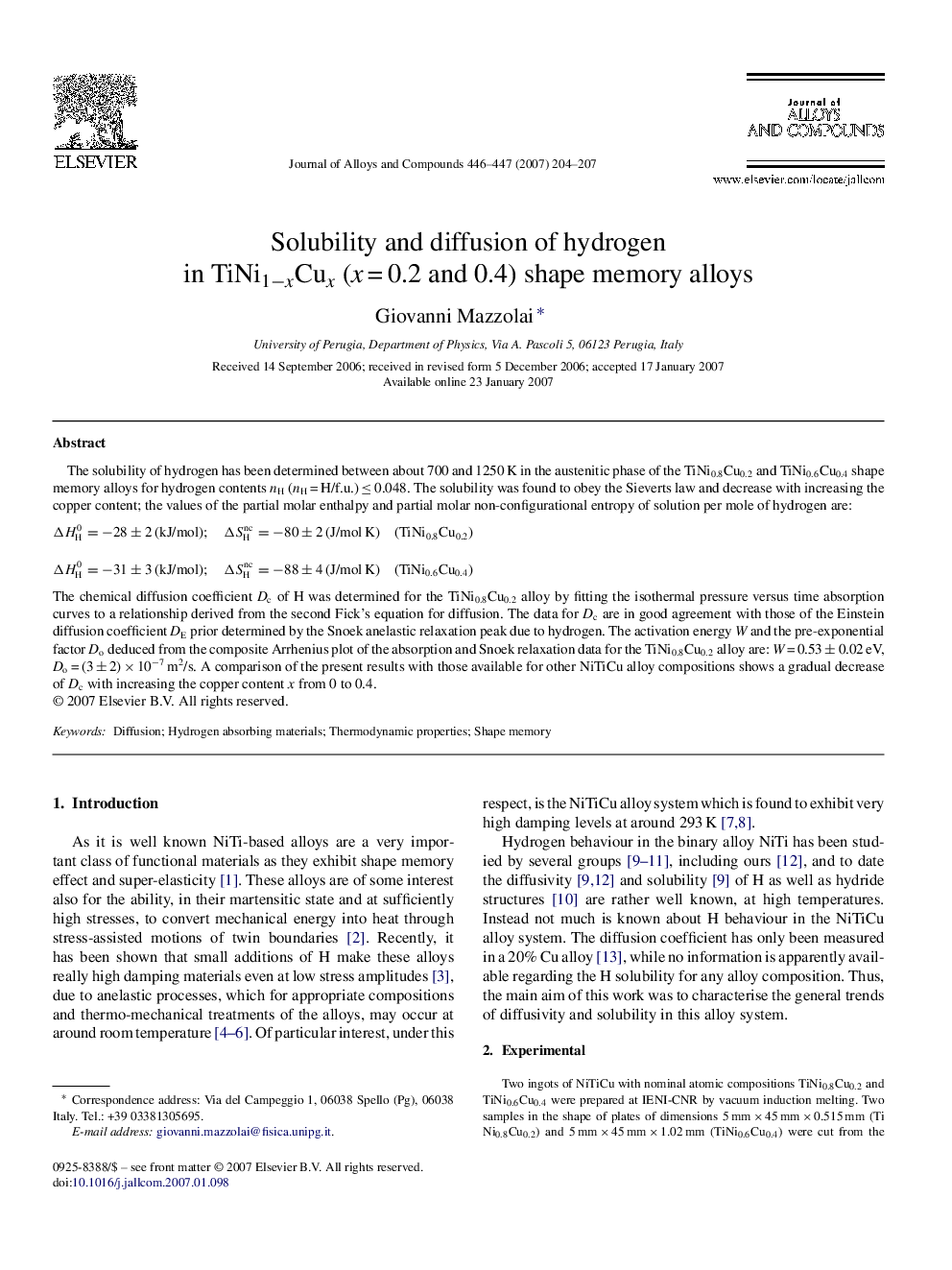| Article ID | Journal | Published Year | Pages | File Type |
|---|---|---|---|---|
| 1625931 | Journal of Alloys and Compounds | 2007 | 4 Pages |
The solubility of hydrogen has been determined between about 700 and 1250 K in the austenitic phase of the TiNi0.8Cu0.2 and TiNi0.6Cu0.4 shape memory alloys for hydrogen contents nH (nH = H/f.u.) ≤ 0.048. The solubility was found to obey the Sieverts law and decrease with increasing the copper content; the values of the partial molar enthalpy and partial molar non-configurational entropy of solution per mole of hydrogen are:ΔHH0=−28±2 (kJ/mol); ΔSHnc=−80±2 (J/mol K) (TiNi0.8Cu0.2)ΔHH0=−31±3 (kJ/mol); ΔSHnc=−88±4 (J/mol K) (TiNi0.6Cu0.4)The chemical diffusion coefficient Dc of H was determined for the TiNi0.8Cu0.2 alloy by fitting the isothermal pressure versus time absorption curves to a relationship derived from the second Fick's equation for diffusion. The data for Dc are in good agreement with those of the Einstein diffusion coefficient DE prior determined by the Snoek anelastic relaxation peak due to hydrogen. The activation energy W and the pre-exponential factor Do deduced from the composite Arrhenius plot of the absorption and Snoek relaxation data for the TiNi0.8Cu0.2 alloy are: W = 0.53 ± 0.02 eV, Do = (3 ± 2) × 10−7 m2/s. A comparison of the present results with those available for other NiTiCu alloy compositions shows a gradual decrease of Dc with increasing the copper content x from 0 to 0.4.
